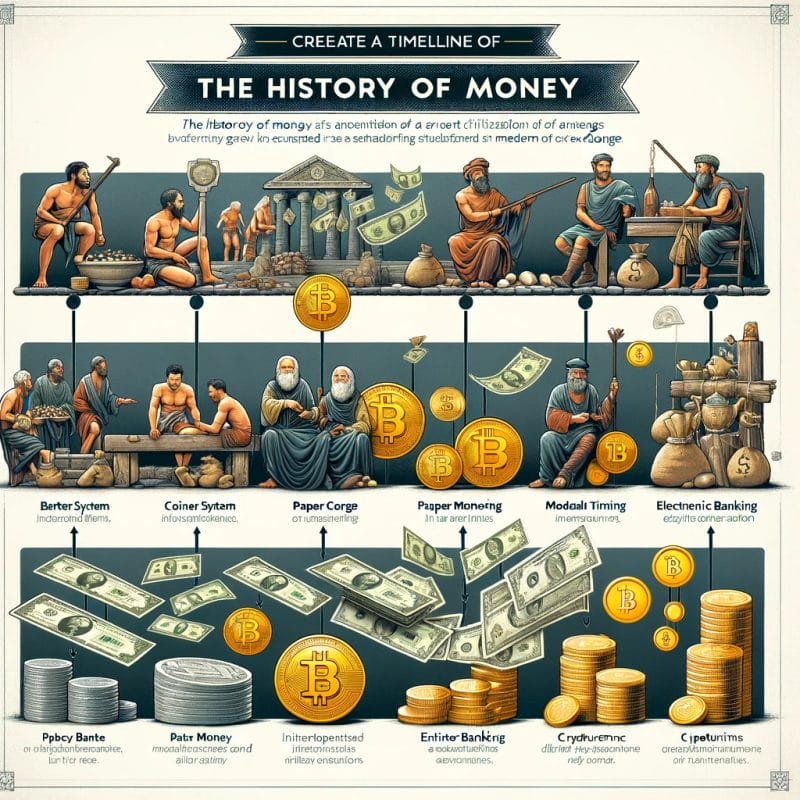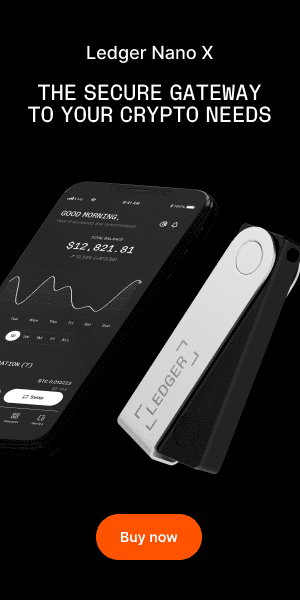In this article, we’ll look at what is Money and how does it work?
Money is a medium of exchange that is used by people to purchase goods and services, as well as to save and invest. It is a store of value and is accepted as payment in various forms, including cash, coins, checks, and digital currencies like Bitcoin.
Let’s dive in to learn more about money, how money works and its characteristics.
What is Money, and How Does it Work?
Money is the lifeblood of our economy, a universal medium of exchange that enables the transaction of goods and services between parties. While one might associate money with physical entities like gold or silver, its true identity lies not in its physicality but in its functionality. It’s essentially a unit of account that quantifies the value of goods and services.
Money plays several roles in our economic ecosystem. First and foremost, as a unit of account, it allows us to express the worth of various commodities in a standardized manner. This common measure simplifies trade and fosters fairness in exchange.

Additionally, money acts as a store of value. It possesses the unique capability to preserve wealth over time, offering individuals and societies a mechanism to accumulate wealth and secure their future.
Contrary to popular belief, money doesn’t replace goods or services; instead, it operates as an effective intermediary, easing the exchange process. Money takes many forms in our modern world, from tangible cash and coins to intangible checks and the ever-evolving digital currencies like Bitcoin.
In its most basic function, money is used to acquire goods and services. However, its utility extends beyond simple transactions. It also allows for the transfer of wealth across generations and provides a means for people to save and invest, thus influencing economic growth and personal financial security. So next time you look at that bill or coin in your hand, remember, it’s not just a piece of paper or metal; it’s a powerful tool that keeps our economic world spinning.
The History of Money
The concept of money and its use is as old as human civilization, yet it has evolved significantly over the centuries.
Initially, societies operated on a barter system where goods and services were directly exchanged. However, this system was limited by the requirement of a “double coincidence of wants” (finding someone who wants what you have and has what you want) and the challenge of subdividing goods.
To overcome these issues, commodity money emerged. Commodity money included items universally recognized for their intrinsic value, such as gold, silver, salt, or livestock. Because these commodities held value in and of themselves, they became a widely accepted medium of exchange.
The next step in the evolution of money was the introduction of representative money. This was often in the form of banknotes or coins made from less valuable materials, and their value was guaranteed by a promise they could be exchanged for a set amount of a valuable commodity like gold or silver.

The 20th century saw the world move towards fiat money, the money we use today. A physical commodity does not back fiat money; instead, it derives its value from people’s trust and confidence in the government issuing it. This allows for a more flexible monetary policy.
In recent years, we’ve witnessed the birth of digital or cryptocurrency, a virtual form of currency using cryptographic technology for secure transactions. Bitcoin, introduced in 2009, was the first cryptocurrency, and since then, many others have emerged.
Therefore, the history of money is a fascinating journey, mirroring humanity’s progress from simple trading to complex economic systems.

Barter System
In the barter system, goods and services would be directly exchanged without using money. So, if you had extra wheat, you could exchange it for meat, milk, or any other commodity you wanted. There were two main problems with the barter system:
1) Double Coincidence of Wants: In the barter system, if you wanted chicken, you had to find someone who didn’t only have chickens but also wanted the wheat you were producing. This conundrum was called the double coincidence of wants. Finding the right person to meet your needs and desired product was difficult.
2) Subdivision of Goods: Since bulky products like chicken and cows were indivisible, it was hard to exchange goods and services. If you only wanted one kg chicken, it wasn’t possible to divide it. You had to buy the whole chicken!
Throughout history, we have seen various forms of money, for example, gold, paper money, cigarettes in post-WWI Germany, and most recently, cryptocurrencies.

What are the Characteristics of Money?
For something to be accepted as a form of money, it must have all these six characteristics:
- General Acceptability: Before it can be used as money, people must trust that it will generally be accepted in the market. In post-WWI Germany, cigarettes were accepted as a form of payment because the Deutschmark had lost general acceptability. Today, the US Dollar is traded in the market because the US government has established acceptability for the currency.
- Durability: Money should last a few years without losing its value. If you wanted to store a chicken, you ran the risk of losing it to disease or death.
- Portability: Money should not be too bulky. A fundamental problem with gold and silver coins was that you could not carry huge amounts. Due to the proliferation of debit cards, you can carry thousands of dollars in your pocket today without feeling too bulky.
- Divisibility: As mentioned above, cows and chickens cannot function as money because they are not divisible. With paper currency, you have small denominations like 50 cents and 1 dollar, making purchasing a cup of coffee or candy easier.
- Homogeneity: Currency bills should look the same to be accepted as payment. If each note looks different, people cannot differentiate a fake dollar bill from an original one.
- Limited Supply: Most importantly, money can lose value if it has a high supply. This happens in countries like the US and the UK, where inflation was at record-high levels in 2022.
Types of Money
When we talk about money, we’re talking about two different things: fiat money and digital money.
Fiat Money
Fiat money is a currency backed by a government or a central bank. Currencies like the U.S. dollar, the Euro, and the British pound are all examples of fiat money. Fiat currency is created as debt by the government or central bank. The government or central bank will print new units of fiat money to replace old units of currency that are being destroyed or used in transactions. This creates more demand for the currency, which drives up its value.
Digital Money
Digital money, often called virtual currency, digital asset, electronic cash, or e-cash, represents a new phase in monetary evolution. Unlike traditional fiat money, which is underpinned by a tangible asset, digital money is undergirded by the trust placed in the system.
Digital money does not have a physical counterpart in the real world; instead, it exists purely in electronic form. Its value is derived from the faith users place in its intrinsic system, such as the algorithms and security measures employed. In this sense, digital money epitomizes the concept of money as a social and technological construct, reliant on communal trust and the efficacy of the underlying system.
What is Digital Money?
Digital money, also known as cryptocurrencies like Bitcoin, has all the above characteristics except stability. Bitcoin is unstable, as it can have sharp bumps and dumps, making it difficult to use as a means of payment.
Due to this reason, vendors cannot currently accept it as a means of payment as Bitcoin tends to fall 20-30% in 2-3 days. However, in countries like Venezuela, where local currencies have lost value due to hyperinflation, people have started using cryptocurrencies.
What are Central Bank Digital Currencies (CBDCs)?
A captivating development on the horizon of financial technology is Central Bank Digital Currencies or CBDCs. These are being extensively researched and piloted by governments worldwide and could potentially emerge as an officially recognized form of digital money.
CBDCs represent a new type of cryptocurrency on a blockchain platform, fully endorsed and backed by respective national governments. These digital currencies are not to be confused with decentralized cryptocurrencies like Bitcoin, as they remain under the purview of central banking authorities.
However, it’s important to note that CBDCs may not be immune to traditional economic challenges despite their innovative nature. Over time, issues such as inflation and accountability could still arise, mirroring the complexities encountered with conventional fiat currencies. The path towards the wide adoption of CBDCs is a journey filled with potential and prudence as countries navigate this promising yet uncharted territory.

FAQs
How Do You Define Money?
Money is any commodity or token widely accepted as a medium of exchange for goods and services. Money is also used as a unit of account, a store of value, and a means of payment.
What Are The 4 Types of Money?
The four types of money are commodity, fiat, fiduciary, and commercial bank. Commodity money is a physical good used as a medium of exchange, such as gold or silver. Fiat money is a currency that is declared legal tender by a government. Fiduciary money is money that a third party, such as a bank or government, backs. Commercial bank money is a type of money private banks create when they issue loans.
What Makes Money a Money?
Money is considered money when it has certain characteristics, such as durability, portability, divisibility, homogeneity, and limited supply. Durability means the money should last a few years without losing value. Portability means that the money should not be too bulky. Divisibility means that the money should be able to be divided into smaller denominations. Homogeneity means that all money should look the same. Limited supply means there should be a finite amount of money in circulation.
What Are The 3 Definitions of Money?
1. It is any commodity or token widely accepted as a medium of exchange for goods and services.
2. It is also used as a unit of account, a store of value, and a means of payment.
3. Money is also a set of institutional arrangements that allow for transferring and exchanging goods and services between economic agents.


